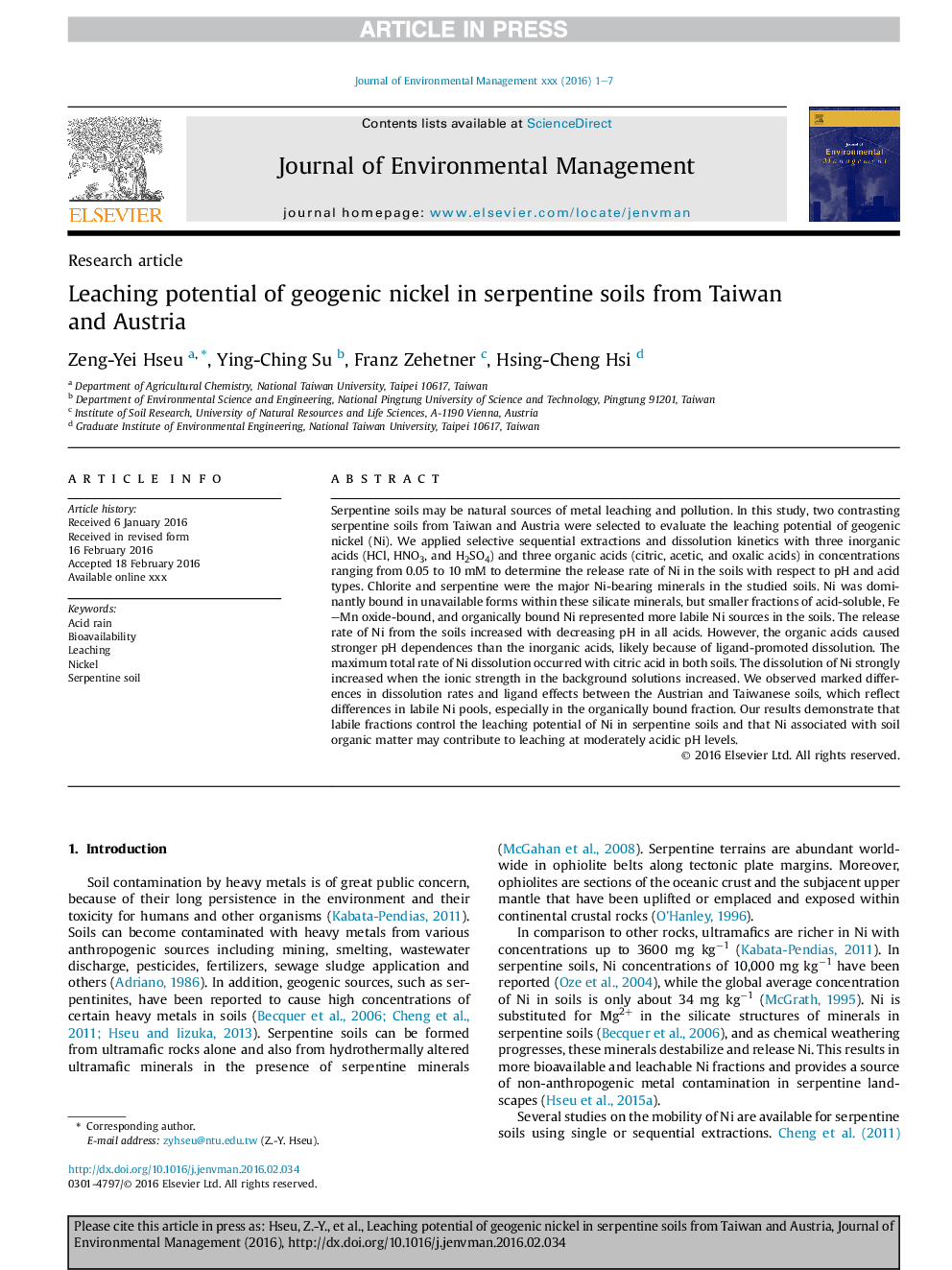| Article ID | Journal | Published Year | Pages | File Type |
|---|---|---|---|---|
| 5117413 | Journal of Environmental Management | 2017 | 7 Pages |
Abstract
Serpentine soils may be natural sources of metal leaching and pollution. In this study, two contrasting serpentine soils from Taiwan and Austria were selected to evaluate the leaching potential of geogenic nickel (Ni). We applied selective sequential extractions and dissolution kinetics with three inorganic acids (HCl, HNO3, and H2SO4) and three organic acids (citric, acetic, and oxalic acids) in concentrations ranging from 0.05 to 10Â mM to determine the release rate of Ni in the soils with respect to pH and acid types. Chlorite and serpentine were the major Ni-bearing minerals in the studied soils. Ni was dominantly bound in unavailable forms within these silicate minerals, but smaller fractions of acid-soluble, Fe-Mn oxide-bound, and organically bound Ni represented more labile Ni sources in the soils. The release rate of Ni from the soils increased with decreasing pH in all acids. However, the organic acids caused stronger pH dependences than the inorganic acids, likely because of ligand-promoted dissolution. The maximum total rate of Ni dissolution occurred with citric acid in both soils. The dissolution of Ni strongly increased when the ionic strength in the background solutions increased. We observed marked differences in dissolution rates and ligand effects between the Austrian and Taiwanese soils, which reflect differences in labile Ni pools, especially in the organically bound fraction. Our results demonstrate that labile fractions control the leaching potential of Ni in serpentine soils and that Ni associated with soil organic matter may contribute to leaching at moderately acidic pH levels.
Related Topics
Physical Sciences and Engineering
Energy
Renewable Energy, Sustainability and the Environment
Authors
Zeng-Yei Hseu, Ying-Ching Su, Franz Zehetner, Hsing-Cheng Hsi,
